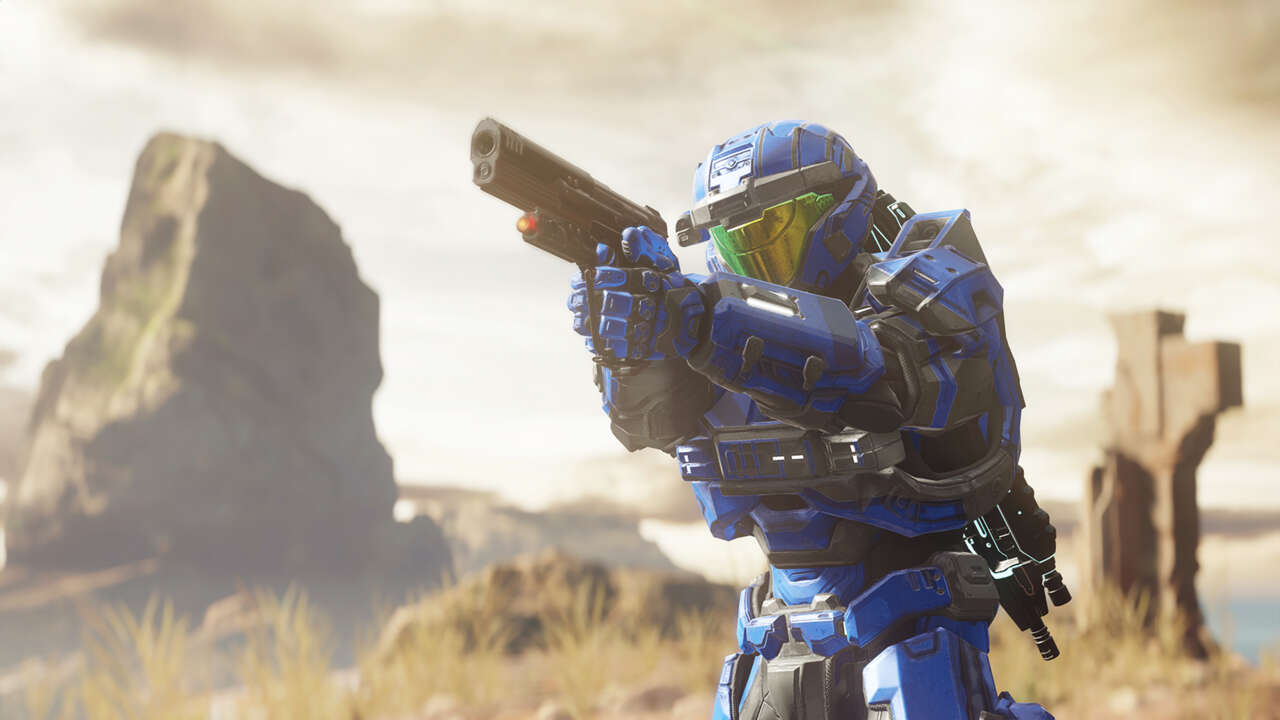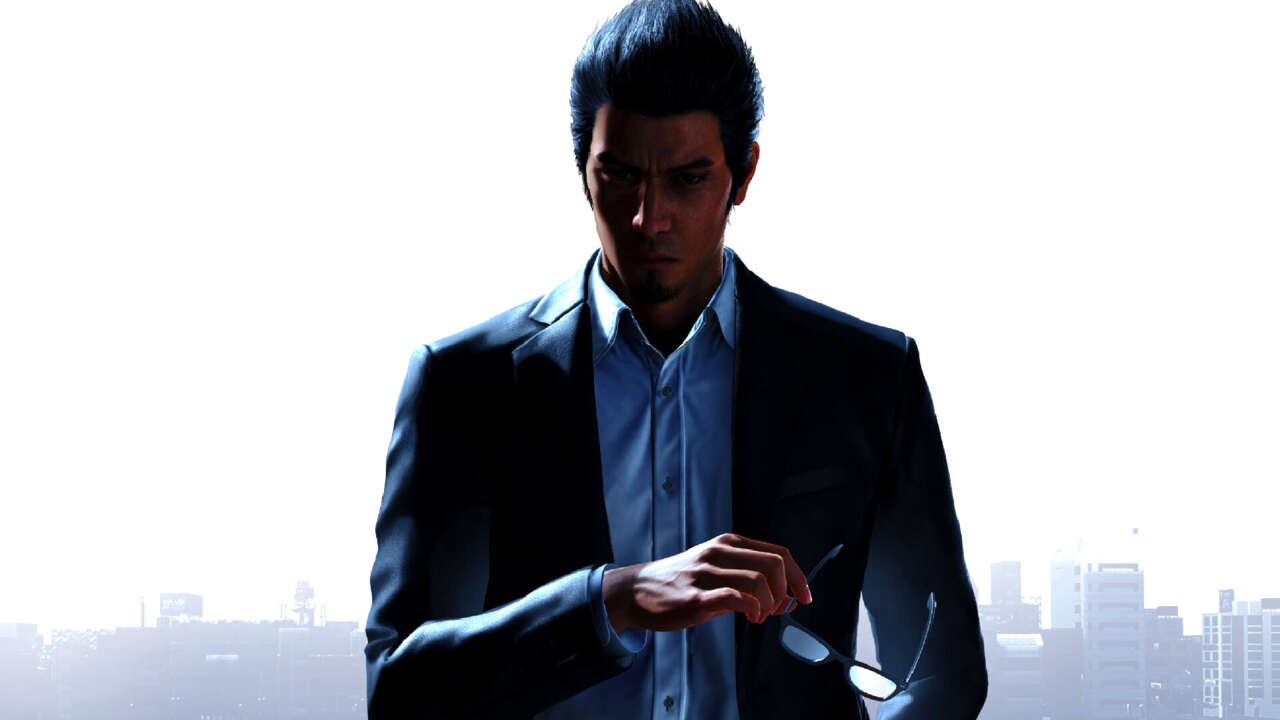Magic: The Gathering – Final Fantasy Is As Exciting For The Design Team As It Is For The Players
#news #newstoday #gaming #gamingnews #latestnews #gameupdates #newsupdates
To say that the team behind Magic: The Gathering’s upcoming Final Fantasy collaboration set is excited to launch would be an understatement.
“As we drove up to the convention center, there’s this giant hotel-sized screen that says ‘Magic: The Gathering – Final Fantasy on it,” principal designer and set design lead Gavin Verhey said during a press preview event for the upcoming set. “We all just looked at each other and said, ‘This is it, this is what we’ve been waiting for. It’s finally happening.'”
Moments like this are what Verhey, executive producer Zakeel Gordon, principal game designer Dillon Deveney, and senior game designer Daniel Holt have dreamed of throughout the four-year history of the set’s development. As the team reminisces about their time working on the expansion, both in Square Enix’s offices in Japan and the Wizards of the Coast headquarters in Renton, Washington, our Zoom call lights up with smiles and laughter at the simple mention of cards like Summon: Bahamut, names like Yoshitaka Amano, and countless other references.
For these four people, the release of Magic: The Gathering – Final Fantasy is a culmination of hard work, a celebration of both Magic and Final Fantasy, and ultimately, a declaration of victory. GameSpot sat down with the panel for a lengthy chat about Final Fantasy’s foray into Magic: The Gathering, which begins on June 13.
The design process
“I was designing cards at 2 AM” is a common phrase out of Verhey’s mouth. In this particular case, he’s talking about Absolute Virtue, the powerful boss from Final Fantasy XI, and the card that appeared during the panel. Gordon, Deveney, and Holt knowingly nod along, anticipating where the story is going.
“I was trying to design Absolute Virtue, and I could not figure out what to do,” Verhey says, “and I fell asleep at my desk–like an adult. Suddenly, I woke up and thought, ‘Ah! Protection from everything! It literally popped in my head as I was waking up from sleeping. I typed it into the file and thought, ‘Well, that’s probably not going to stick,’ but then I showed it to everyone, and they just loved it. They thought it was amazing.”
That’s not to say every conversation went so swimmingly; Deveney used the word “spirited” to describe some of the conversations between himself and Holt. “We only have so many design slots in the [pre-constructed Commander] deck for new cards,” Deveney describes. “Who gets that? Who makes the cut?”
Deveney specifically recalls a discussion around the Final Fantasy XIV pre-constructed deck, which in itself was a Herculean task to create. “Truth be told, this is a game that’s been running for 10-plus years, with 14 years of content; we could probably make a whole set of just that one game,” Deveney says. “I’ve been playing the game since launch, and Daniel said he was playing it, so our perspectives were different.”
Deveney says that difference in perspective helped the two of them fine tune the FF14 Commander deck to be as authentic to the game as possible. Sometimes Deveney would want a character that Holt didn’t think was all that important; other times Deveney wouldn’t take no for an answer. “One character in particular, I had to say ‘Daniel, if they don’t make it in, I will be very upset, because someone will get very upset with me if they don’t make it in.”

A focus on Commander
With so much history to parse through, and only so much space to go around in an expansion set, choosing what products received which cards or designs led to some more “spirited” discussion. “We look at the whole product as one experience, but then we have to look at each individual piece–main set, Commander, etc,” Deveney says. “Sometimes I ask myself ‘If this is the only thing a fan buys, what do they expect to see?'”
For Commander specifically, which Daniel Holt was primarily focused on, it allows him to explore the four games receiving pre-constructed decks–FF6, FF7, FF10, and FF14–as their own unique stories. As Holt puts it, “in the Commander decks we got to go super deep.”
“The Commander decks were almost each their own Universes Beyond product in the way we approached them,” Holt continued. “Final Fantasy VI is its own world, FFVII’s its own world. They don’t cross. Each allows us to add different things; for example, elves only appear in certain games but not in others, so we did some elf reprints in the deck for the game where they’re found.
“With Final Fantasy VI, we had a graveyard recursion theme, but it’s not from death, it’s ‘lifting your allies up.’ We twisted some of the reprints to be a little more themed that way. There were a lot of creative restrictions, but also we were able to create really cool things because of it.”


Works of art
One interesting fact mentioned during the press preview was in regard to some of the artists who contributed to the card’s art: Nine of them, well known for drawing Final Fantasy art throughout history, were given the option to draw whoever or whatever they wished. This opened up some interesting opportunities; even though Amano has drawn Kefka before, he’d never drawn Kefka’s final form in his entire career–until now.
This led to what Verhey describes as one of the coolest moments of his life. “We’re in Japan, and we happened to be at the Square Enix office when Amano’s Kefka piece arrived. No one had seen it yet, and it came in this black art briefcase provided by Amano himself.”
“They set it on the table, and we all just went silent, staring at an original Amano work…but at a distance, because none of us wanted to get too close and risk messing it up somehow,” Verhey continues. “Nobody sneeze, no one do anything that could put a mark on this.”
Deveney says that most of the artists drew characters they’d been familiar with, but a few took the opportunity to branch out and try something new. “There were a few artists that were just like, ‘Oh, I would love an opportunity to play with this other game’s toy, because I didn’t work on it and that sounds really fun,'” Deveney explains. “They were like, ‘Oh, I’ve always wanted to draw this character!'”
As iconic as Final Fantasy artwork is, the soundtracks to each of these games is just as well-known. Implementing music into a physical card game, of course, is very hard to do, but the team did try to make it work. As Deveney puts it, “those discussions totally happened.”
“I’ll say that there are two or three cards that you might be happy to see have ‘wink, wink, nudge, nudge’ references to famous song titles–or moments where you can hear those songs playing–that we were able to get into the set,” Deveney says. “There’s a larger discussion about music rights and how it’s a little bit different with every industry, but yes, we were able to get a few things in there that are very intentionally referential.”


Choosing a Headliner
Recent Magic sets have incorporated a Headliner–one specific card that acts as a “chase” card, with a limited number of printings and each one individually numbered. The last set, Tarkir: Dragonstorm, used Mox Jasper–the dragon-focused Mox gem–as the Headliner, with special art from original Mox artist Dan Frazier.
For Final Fantasy, the team knew it wanted to pick something every FF fan knows. Sure, they could have made the Headliner a character like Cloud or Sephiroth, but fans of FF7 would appreciate it to the fullest; fans of other games might not enjoy it as much. That’s why, for Zakeel Gordon, the choice was simple: a chocobo, specifically Traveling Chocobo.
“The Chocobo was the flagship character that we wanted to push to the forefront, because it’s represented in the vast majority of games,” Gordon said. “If you are a fan of the franchise, but you only have a connection to certain games, you will recognize a Chocobo no matter what.” The team did pull from a specific game for the card–multiple variants depict multiple colored Chocobos from Final Fantasy VII–but even if a player isn’t familiar with chocobo racing, they’ll know what the bird is.
What is odd about this serialized Chocobo, however, is the number of printings–where previous Headliners saw 500 copies made, the golden Traveling Chocobo will only see 77 printings. This was intentional, as the team wanted the card to feel even more special. “77 is, I think, the perfect medium for where we’ve been doing serialization recently, Gordon explains, “where it’s a little bit less rare than the “one-of-One Ring,” but it’s a little bit more rare than an “X of 500.” And, in the spirit of Final Fantasy 7, two sevens just felt like the right number.”


Through The Ages
One final big feature in this new expansion is Final Fantasy: Through The Ages, a bonus sheet of 64 cards–four cards for each of the 16 mainline FF games. All 64 cards are reprints of previously-released Magic cards, but the art depicted on each card comes from the authentic Square Enix archives. It’s a history lesson in cardboard form, and Dillon Deveney says they had a lot of material to parse through–over 5,000 pieces of art, to be precise.
“We’d ask all kinds of questions,” Deveney said, “What do we think is the most bespoke thing that someone would want to see about this game? What’s the best version of this art? What’s the best version of this character? Should we go with a sketchy concept or fully finished illustration? Would this be a good land or an enchantment or an artifact? We went through everything.”
Multiple cards from the bonus sheet were shown during the PAX East panel, including FF9’s Zidane Tribal as Ragavan, Nimble Pilferer and FF2’s Firion, Swordmaster as Sram, Senior Edificer. Previously, FF7’s Yuffie Kisaragi was unveiled as a reskin of Yuriko, the Tiger’s Shadow.
“The bonus sheet was a place where we could balance each game perfectly,” Gordon said. “We allotted a ‘budget’ to each game: There will be four cards, we’re going to have a protagonist and an antagonist, and then we’ll find two moments; one maybe is more story-driven, and the other may be a little bit more mechanically driven.”
—
As the panel signed off on the preview, host and former MTG broadcaster Richard Hagon said that even though this is still Magic: The Gathering, there’s something about the Final Fantasy set that feels different. “You can absolutely play wonderful games of Magic with this set, the cards are there, the designs are there. But, the feelings are unique and special, and that is what people are going to remember for a very long time.” As the panel enthusiastically nodded, that feeling definitely came through from the minds behind the set. Now, all that’s left is for the players to pick up and play.
Magic: The Gathering – Final Fantasy will be available June 13 at local game stores and big box retailers.
Check out our Latest News and Follow us at Facebook
Original Source







